Metastable AlB2 structured TM-Si-B2±z (TM = Ti, Zr, Hf) solid solutions from first-principles
Research output: Contribution to journal › Article › Research › peer-review
Authors
Organisational units
External Organisational units
- Institute of Materials Science and Technology
Abstract
AlB2 structured transition metal diborides are a class of refractory ceramics standing out through their high-temperature stability and exceptional mechanical properties, encouraging research on their bulk and thin film forms. In Physical Vapor Deposition (PVD), scientific interest has focused on growing metastable solid solutions with Si to enhance oxidative properties and fracture characteristics. However, theoretical investigations of such ternary compounds are still rare. Therefore, this study explores the structural, energetical, and mechanical properties of the Ti-Si-B2, Zr-Si-B2, and Hf-Si-B2 structures, as well as their vacancy dynamics, with the help of Density Functional Theory (DFT). For all three systems, silicon prefers the boron sublattice and via structural analysis, metastable solubility limits of 24 at. %, 27 at. %, and 25 at. % of Si in Ti(Si,B)2, Zr(Si,B)2, and Hf(Si,B)2, could be established, respectively. An analysis of simulated XRD patterns, Radial Distribution Functions (RDFs), and Crystal Orbital Hamilton Populations (COHPs), attributed an observed destabilization of the AlB2-type symmetry to Si clustering. Simulated elastic properties revealed a decrease of the Young’s moduli with increasing silicon contents, reproducing experimental values up to 15 at. % Si. The study discovered a structural instability of ternary, metastable AlB2-type compounds concerning metal vacancies.
Details
| Original language | English |
|---|---|
| Number of pages | 12 |
| Journal | Acta materialia |
| Volume | 289.2025 |
| Issue number | 1 May |
| DOIs | |
| Publication status | Published - 4 Mar 2025 |





